The offbeat traveler is always bent on reaching those locales where no tourist or explorer has been for the recent past, and Spiti Valley has all that a traveler’s heart would desire. Being far from the tourist map of India, this valley offers the mystic scenery of breathtaking landscapes, vibrant culture, and serene spirituality in the remotest northern part of India. Unlike the whirlwind of tourist destinations, Spiti Valley will take you across the raw form of nature that man is yet to discover. Let’s dive into everything you need to know about Spiti Valley as an offbeat traveler.
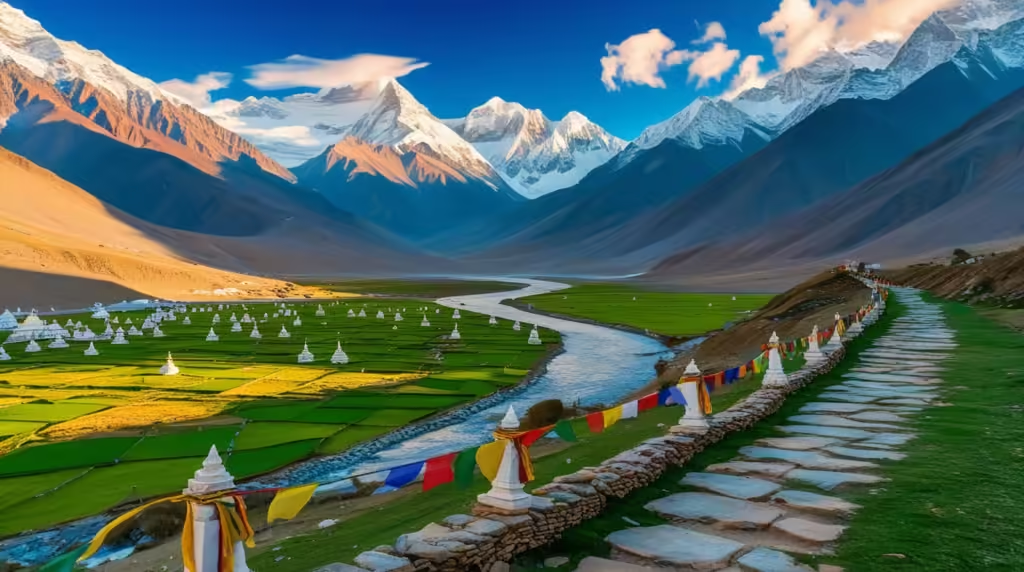
Where is Spiti Valley Located?
Spiti Valley is a place situated at an altitude in the Himalayas and comes under Himachal Pradesh, India. Sandwiched between the borders of Tibet and India, the term Spiti literally means “The Middle Land”. Due to its remote, rugged landscape sandwiched by snow-capped mountains and barren landscapes and snow, it is far removed from other travel destinations.
The Geography and Climate of Spiti Valley
The Spiti Valley is at an elevation between 3,000 to 4,500 meters above sea level. This high elevation leaves the area largely cold all year round. One of the coldest times of the winter season is in winter, when temperatures can severely plummet below freezing. Pleasantly warm weather makes summer the best time for an adventure in this valley.

When is the Ideal Time to Visit Spiti Valley?
The best time to visit Spiti Valley depends on the type of traveler you are and what experiences you seek.
Seasonal Highlights: Summer vs. Winter
Summer months (May to October): This is the peak season when people love to visit Spiti. In summer, the roads are clear from the ice blockades during the winter months, so traveling by road is easy. The weather is neither too cold nor too hot, and all the tourist destinations are open and accessible.
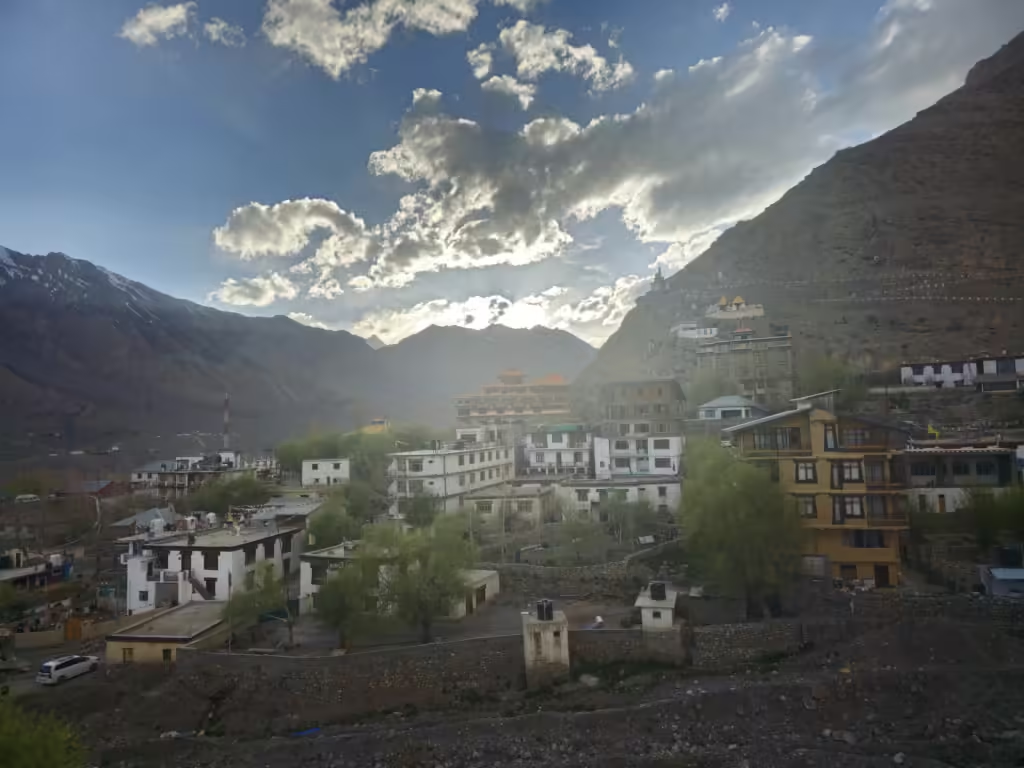
Winter (November to April): If one is willing to be brave-hearted, Spiti can be visited in winters as well. The region is covered with a sheet of snow, and most of the roads remain closed due to heavy snowfall. However, if one is yearning for a real adventure, then winter time offers great chances of snow leopards and quiet, undisturbed Spiti.
The Journey to Spiti Valley: Routes and Accessibility

Accessing Spiti Valley is not easy, rather it becomes an integral part of the adventure.
Road Travel: An Adventure to Remember
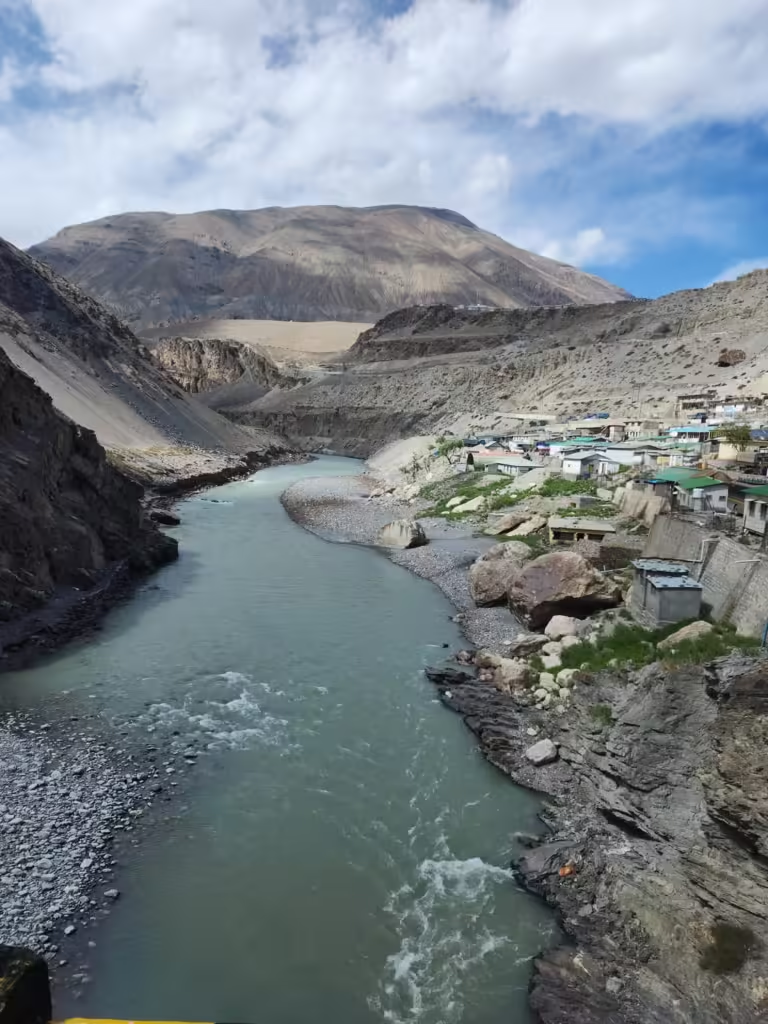
There are two major roads-one coming from Manali and another one from Shimla -which takes you to Spiti Valley. Both the roads possess spectacular scenery and rough, serpentine roads that are just thrilling.
Manali Route: This is the shorter but more demanding route, with high passes like Rohtang and Kunzum Pass posing a challenge for drivers. It’s operational only during the summer seasons.
Shimla Route: As it is the longer route, still it is relatively easy, open nearly for the year. The startling changes from lush green and then to stark naked barren mountains will carry you into awe.
Public Transport Options
Those who do not want to self-drive can use public buses and shared taxis from Manali as well as Shimla, though the services can be infrequent and not very comfortable.
Must-visit places in Spiti Valley
The Spiti Valley is filled with a number of places to visit, each of which boasts of its own beauty and charm
Kaza-The Heart of Spiti
Kaza is at the heart of Spiti and acts as a base for most tourists. Flanked by beautiful mountains on all sides, it is an ideal place to acclimatize before the adventure that lies ahead.
Key Monastery-A Spiritual Sanctum

One of the most famous monuments of Spiti is Key Monastery, perched atop a hill overlooking the Spiti River. It’s a must-see for those interested in Buddhism or simply seeking some peace and quiet.
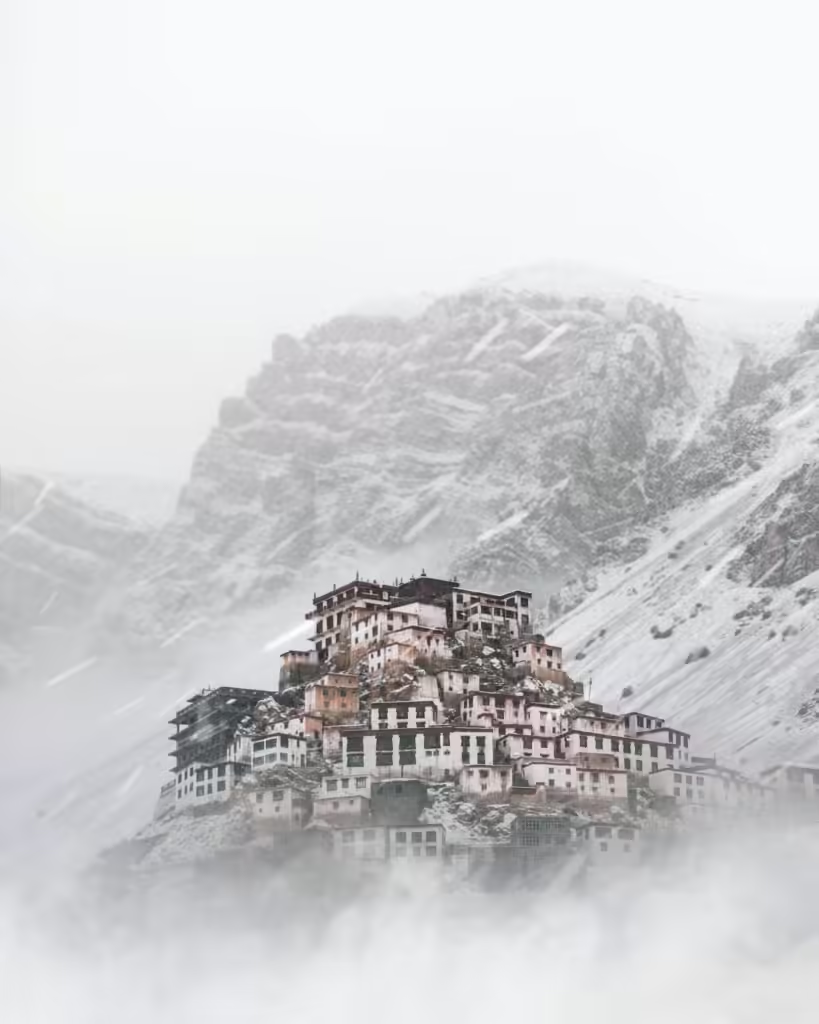
Dhankar Monastery – A Marvel Located on a Cliff Edge
Another place to visit at Spiti Valley is the Dhankar Monastery. Dramatically located on the edge of a cliff, it affords panoramic views of the valley below. Therefore, it can easily be a photographer’s fantasy with the combination of architecture and location.
Hikkim – Home to the World’s Highest Post Office
At an altitude of around 4,440 meters (14,567 feet), Hikkim boasts the distinction of having the world’s highest post office. This tiny post office, set against the backdrop of Spiti’s stunning landscape, has been in operation since the 1980s and still serves the local villagers and adventurous travelers who want to send postcards to their loved ones from this unique location. If you’re looking for an extraordinary souvenir, sending a postcard from Hikkim with a stamp marking its record altitude is a must.
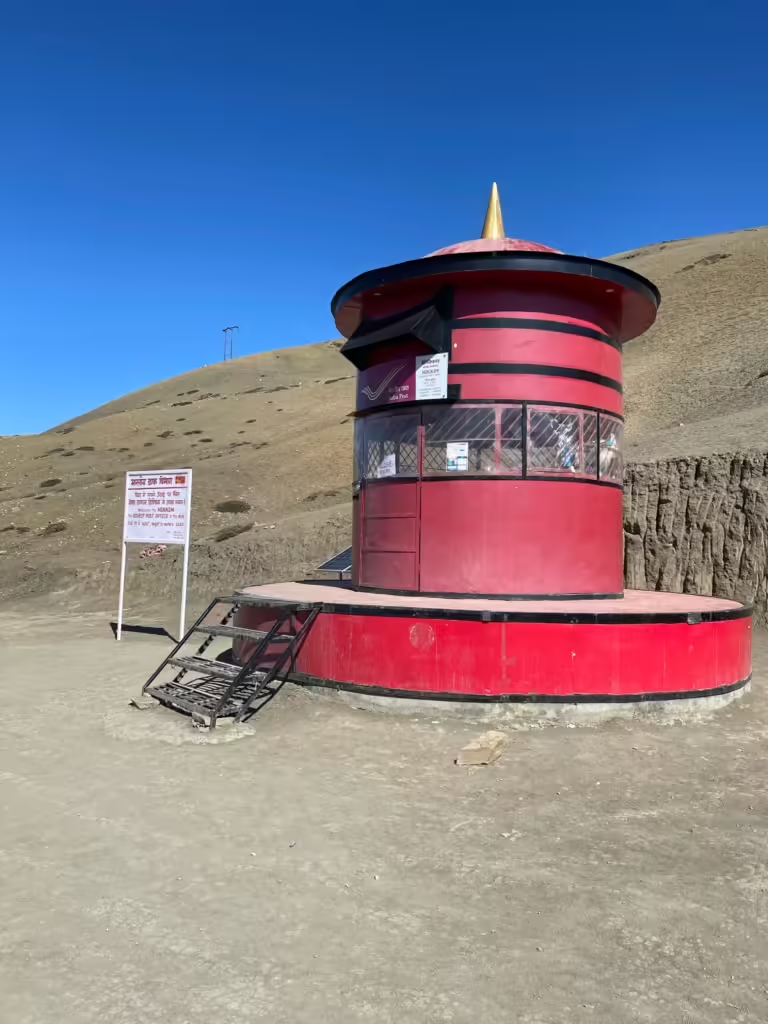
The journey to Hikkim is an adventure in itself, requiring a short yet scenic drive from Kaza. The post office offers a simple yet heartwarming experience, where you’ll meet the postmaster and can engage in a short conversation about life in such a remote part of the world. Not many can say they’ve mailed a letter from the world’s highest post office—this is your chance!
Gue Monastery – The Mummified Monk of Spiti
One of the most mysterious and lesser-known places in Spiti is Gue Monastery, famous for housing a rare and eerie attraction—a naturally preserved mummified monk. Located in the tiny village of Gue, close to the Indo-Tibetan border, this small monastery is a hidden treasure waiting to be explored. The mummy, believed to be of a monk named Sangha Tenzin, is around 500-600 years old and is in a seated meditative posture.
What makes the mummy even more extraordinary is that it is naturally preserved without any embalming techniques, thanks to the dry and cold climate of the region. The monk is said to have self-mummified, and his body remains remarkably intact with hair and skin still visible. For those with an interest in history and spirituality, visiting Gue Monastery is a rare and profound experience.
To get to Gue, you will need to take a slight detour from the main road between Kaza and Tabo. It’s a remote village, but the journey is worth it for the chance to witness one of Spiti’s most intriguing secrets.
Chicham Bridge – The Highest Suspension Bridge in Asia
Suspended high, dizzyingly about 4,000 meters (13,500 feet) across the valley and as one of the most incredible feats of engineering in Spiti Valley, the Chicham Bridge is, today, Asia’s highest suspension bridge. It stretches over a deep gorge connecting the otherwise inaccessible far-off villages of Chicham and Kibber, which were previously connected only via an extremely long and tortuous detour or a dangerous ropeway.
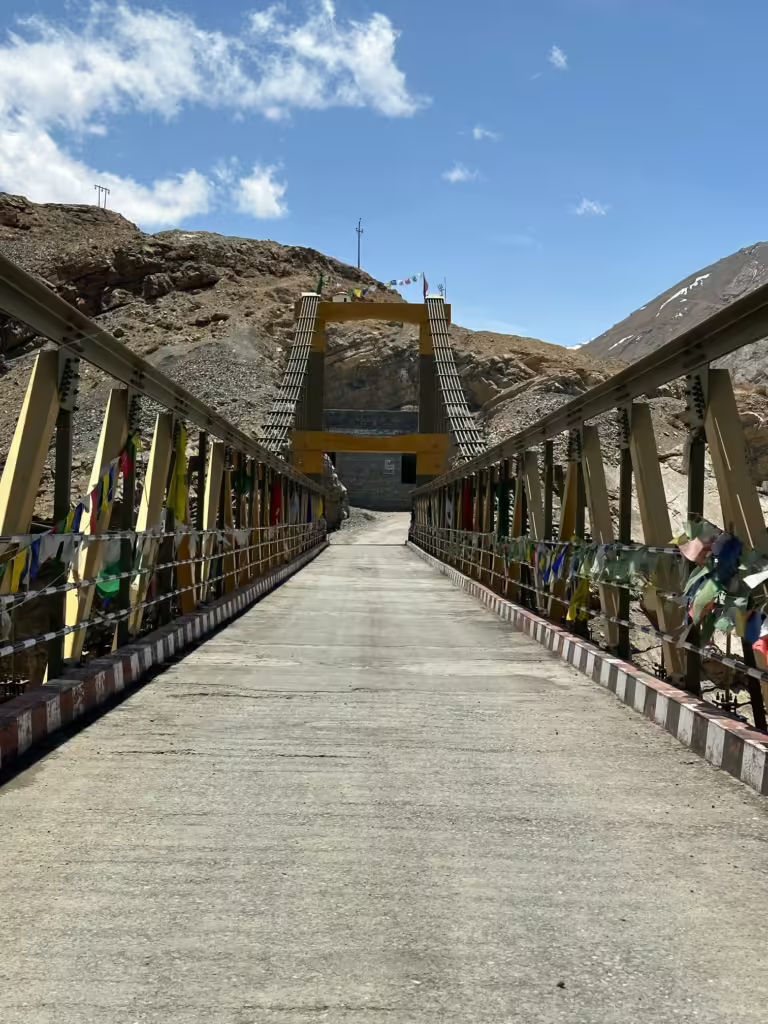
There are great views of the dramatic landscape below, its sheer drop into the gorge beneath you making this a thrilling experience for any traveler. Most impressive is how locals could build this in such a challenging and remote location, turning it now into an essential lifeline for the villagers, which cuts down hours of travel time.

For the adrenaline lover, it is an adventure taking a walk across Chicham Bridge alone-there is a sense of wonder and slight dizziness while getting the big sweep of Spiti’s dramatic landscape. Photographers, adventurous souls, and extreme landscape buffs will simply need to see it for themselves.
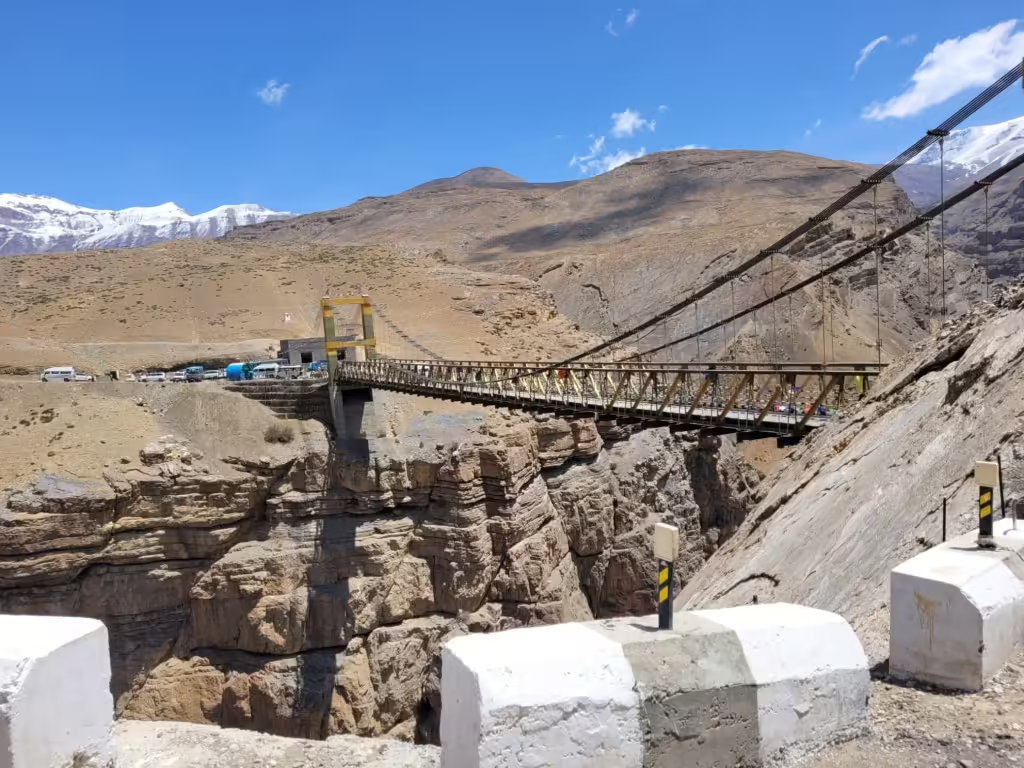
Chicham Bridge has a very short drive from the village of Kibber. It’s easily accessible and will add a real adventure to your itinerary while traveling in Spiti.
Langza – The Fossil Village of Spiti
Langza is a small village with an elevation of around 4,400 meters (14,435 feet) above sea level and has the feel of coming straight from another age. Dominated by a huge Buddha statue that looks over the valley, Langza offers some of the most panoramic views of the barren yet striking landscape of Spiti. The serene environment provided by the snow-capped mountains and vast open spaces makes Langza an ideal place for those seeking peace and serenity.

What is so interesting about Langza is that it has earned for itself the reputation of the Fossil Village. Millions of years ago, the Spiti Valley was submerged under the Tethys Sea and therefore encompasses numerous marine fossils, and Langza is no exception. Visitors have gone fossil hunting in the surrounding areas seeking ancient ammonites and other fossilized creatures embedded in the rocks. For history and geology enthusiasts, Langza’s fossil fields is a veritable treat.
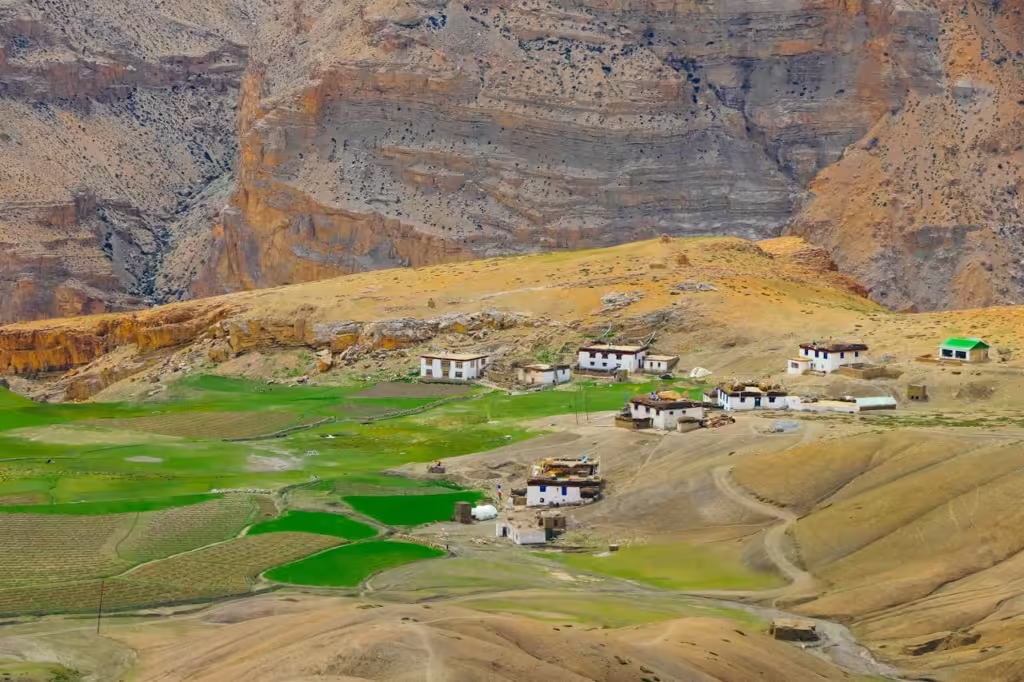
Pint-sized and quaint, the village gives one an insight into a simple lifestyle that is lived by the locals of Spiti. A homestay here allows one to plunge headfirst into the local culture and appreciate warm hospitality at its best.
The other highlight of Langza is the Buddha statue towering against the Himalayan peaks. This Buddha epitomizes peace and protection of the countryside; what further evokes an aromatic breeze of spirituality, it presents a serene atmosphere in the village.
Chandratal Lake – The Moon Lake of Spiti
Chandratal Lake, also known as the “Moon Lake,” is one of the most beautiful high-altitude lakes in India. Situated at an elevation of about 4,300 meters (14,100 feet), this crescent-shaped lake derives its name from the moon-like shape it appears to be. Chandratal is tucked away amidst the rugged peaks of the Himalayas and has crystal-clear blue waters reflecting the surrounding mountains, thus creating a picture-perfect landscape.
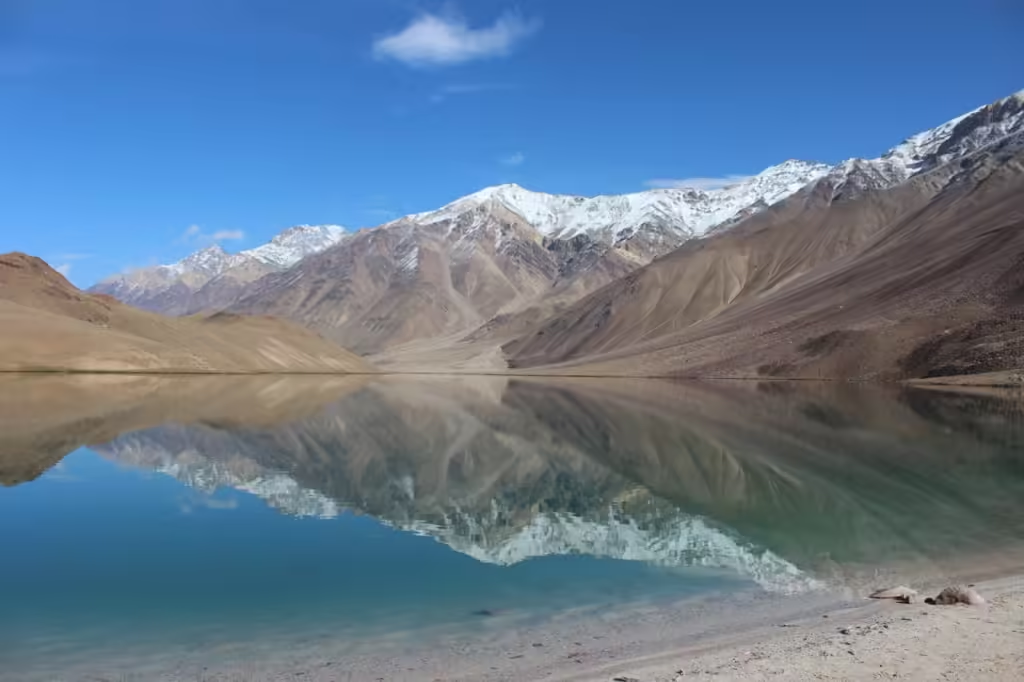
The meadow is absolutely a favorite for trekkers, photographers, and nature lovers alike. Approaching Chandratal itself is an adventure, for it involves a beautiful drive or trek through remote terrains laden with stunning views of those arid mountains and rocky landscapes and immense high-altitude meadows. Camping near the lake is popular; many of its guests spend the night under the wide-open sky, appreciating the serene tranquility of this remote location.
The unspoiled and quiet surroundings and gentle beauty of Chandratal make it the perfect destination for meditation or photography or just soaking up raw Spiti nature. Here, wildflowers surround you in spate of summer beauty. The lake also happens to be a critical stop on several trek routes, particularly a major stretch of the trek to Baralacha Pass.
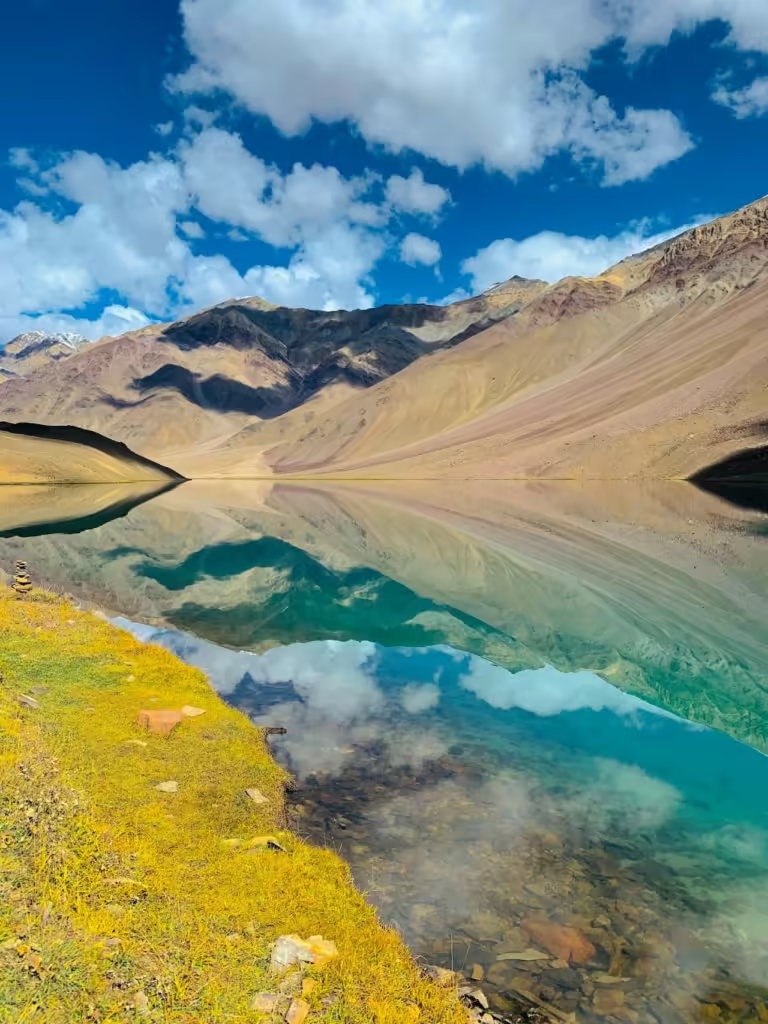
Chandratal looks best in the months of June to October when the snow has melted and the roads are in condition to be crossed. Even when it is at the peak of the tourist season, the lake is still clean enough to make visitors’ experience tranquil and isolating.
Also Read:
Offbeat Adventures in Spiti Valley
Spiti Valley is not just a place where you come to see stuff. There are several offbeat adventures that the thrill-seeker and the lover of nature can head to.
Trekking Adventures from Easy to Challenging
Among the must-do activities in Spiti Valley lie trails that be an easy hike or multi-day challenges where people can find challenging treks, such as Pin Parvati Pass Trek.
Wildlife Escapades: Snow Leopards and Other Endangered Species

The wild of Spiti is so remote and inaccessible that it has only very few rare species, such as the snow leopard. The winter season is quite ideal in case you would love to see these elegant creatures along with Himalayan blue sheep and ibex.
Authentic Homestays at Villages
One of the greatest experiences available in Spiti is to take up the accommodation with a local family in one of the many villages in the region. That will give you a real flavour of life in the locality as well as contributing to the local economy.
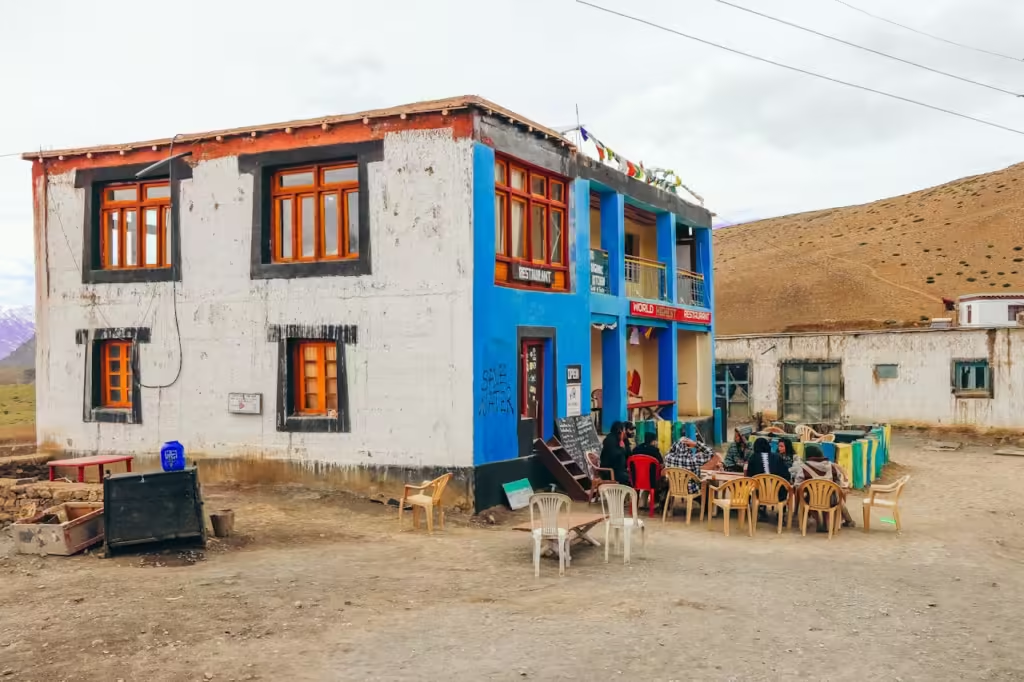
Exploring the culture of Spiti Valley
The culture of Spiti Valley is quite impressively dominated by Tibetan Buddhism and can be seen in its monasteries, festivals, and way of life.
Festivals in Spiti: A Unique Celebration
You will also have a chance to witness some of the bizarre festivals of Spiti during summer, such as the Cham dance at Key Monastery- Colourful and the spiritual dance form.
Local Cuisine: What to Eat in Spiti Valley
The food is basic yet delectable, often prepared from locally sourced products in Spiti. Don’t miss trying the Thukpa (noodle soup), momos and butter tea.
Essential Travel Tips to Spiti Valley
Travel to Spiti is not without its challenges. Here are some must-know tips that prepare you for the trip.
Altitude Sickness: Know About It
It is a high-altitude region, so altitude sickness becomes one of the major risks for traveling. Acclimatization would be necessary, proper hydration, and careful ascension to ensure you don’t get any of those symptoms.
Things to Pack for Spiti Valley
It is worth remembering to pack enough warm clothing, regardless of when you are visiting. Sunscreen, lip balm, and moisturizers will also be essential to protect the harsh sun and climatic dryness.
How to Travel Responsibly in Spiti Valley
Spiti’s sensitive environment requires responsible travelers. Here’s how to go about it:
Eco-friendly Travel Tips
Bring water bottles that can be used repeatedly and avoid plastic. Do not litter, as this may harm the environment.
Take part in sustainable tourism: Engage in activities that will positively support sustainable tourism as much as possible.
Support local communities
The best way to give back is to spend tourist dollars at the local business: homestays rather than big commercial hotels, and on local guides. Local crafts purchase, appreciation of Spiti Valley’s cultural heritage, and showing respect for this heritage also help ensure that community benefit from tourism.
Why Spiti Valley Should Be on Every Offbeat Traveler’s Bucket List
The perfect destination for any soul that yearns to experience the unknown and the untouched – Spiti Valley. It offers the perfect alternative to the mainstream destinations mainstream tourists treat their itineraries to. From rugged landscapes, sanctuaries of spirituality, to vibrant colorful local culture, Spiti has it all. The rich cultural landscape of the place, combined with its beautiful and isolated topography, offers unparalleled opportunities for adventure, making it a destination without parallel for offbeat travelers in search of something more than just another run-of-the-mill vacation.
The remoteness itself is the charm of this valley; every moment spent here goes into becoming an expedition in another world. From towering monasteries, serene lakes, winding mountain roads to the heartfelt hospitality of the local people, Spiti Valley invites you into a land of wonder.
FAQs
What is Spiti Valley famous for?
Spiti Valley is renowned for its remote, high-altitude desert landscapes, ancient Buddhist monasteries, and unique cultural heritage. It is also famous for trekking routes, the chance to spot rare wildlife like snow leopards, and stunning natural sites such as Chandratal Lake.
Is Spiti Valley safe for solo travelers?
Yes, Spiti Valley is generally safe for solo travelers. The locals are welcoming, and there’s a strong sense of community throughout the valley. However, it’s important to plan your trip carefully, especially during winter months when roads can become inaccessible, and to stay in regular contact with locals or other travelers.
What is the best way to explore Spiti Valley?
The best way to explore Spiti Valley is by road, either by self-driving or hiring a local driver. This allows you to fully experience the beauty of the rugged terrain and stop at offbeat locations along the way. Road trips from Manali or Shimla offer the most immersive experience.
Are permits required to visit Spiti Valley?
Permits are required for foreign nationals to visit certain areas of Spiti Valley, particularly close to the Tibet border. These permits can usually be obtained in Kaza or at the nearest administrative offices. Indian nationals typically do not require permits, except for certain restricted areas.
Can I visit Spiti Valley during the winter?
Yes, you can visit Spiti Valley in winter, but it’s a challenging experience. Many roads are blocked by snow, making accessibility difficult. If you do visit during this time, be prepared for extreme cold and limited amenities. However, winter offers a unique chance to witness snow-clad landscapes and the possibility of spotting snow leopards.
So, in short, this place is a treasure trove for an offbeat adventure. The unbridled beauty, spiritual substance, and raw nature surrounding this place make it one of India’s unique travel destinations. From trekking to high mountains to staying in villages as a homestay, there’s something for everyone in Spiti – especially those who enjoy their wild adventures. So pack your bags, get ready with your camera, and prepare to be enthralled by the unseen beauty of Spiti Valley!





[…] in the cold Himalayan desert, Spiti Valley is a remote region known for its rugged terrain and unique […]
[…] Also Read: Discover the Beauty of Spiti Valley: A Travel Guide for Offbeat Travelers […]
[…] Also Read: Discover the Beauty of Spiti Valley: A Travel Guide for Offbeat Travelers […]